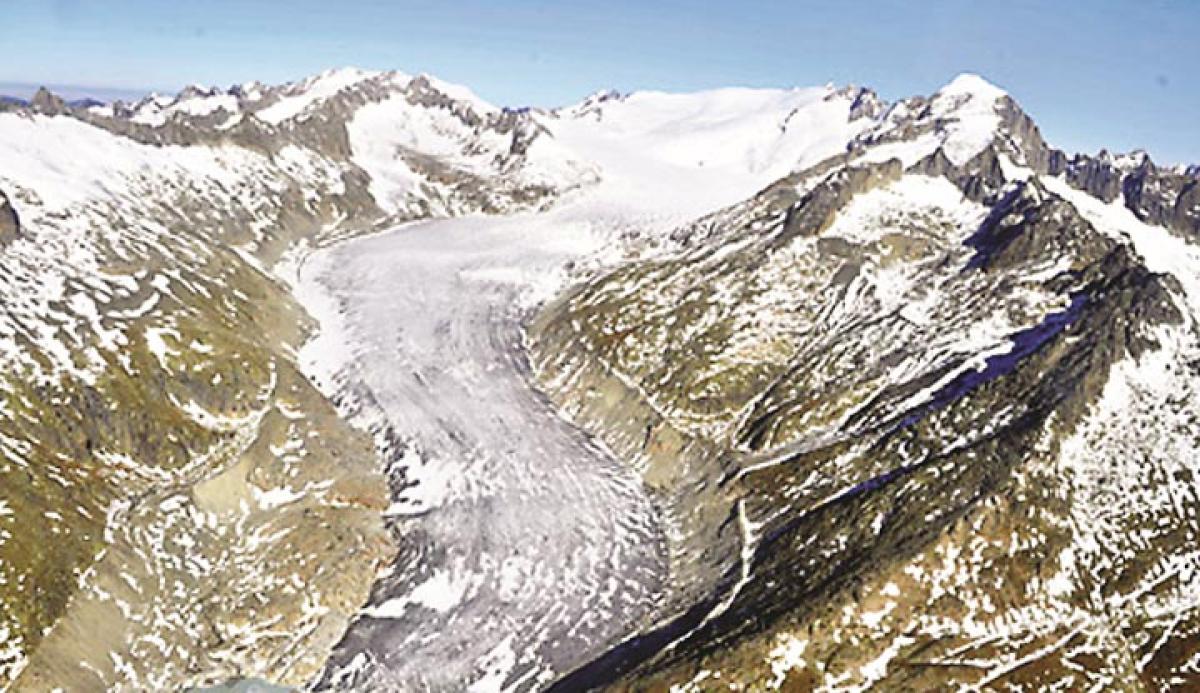Live
- Will end Naxalism in Chhattisgarh by March 2026: Amit Shah
- Will gift one project daily to people during Jan Kalyan Parv
- Mahakumbh & the Politics of Sanatan Nationalism
- A Soulful Celebration of Global Music
- Brahmin Community delegation felicitates CM Saini
- Allu Arjun Visits Chiranjeevi’s House for Lunch Meet
- Toyota organising TG Grameena Mahotsav
- Special rituals conducted at Maramma Temple
- Siddaramaiah has special love for Muslims: BJP
- We can’t afford spending less than 6% of GDP on healthcare
Just In

Water not only connects India, Nepal and China but can also be used to promote regional collaboration among them to better manage their resources and reduce hazardous risks specifically in Bihar\'s Kosi basin for sustainable development, says an expert at the International Centre for Integrated Mountain Development (ICIMOD) that is based here.
Kathmandu: Water not only connects India, Nepal and China but can also be used to promote regional collaboration among them to better manage their resources and reduce hazardous risks specifically in Bihar's Kosi basin for sustainable development, says an expert at the International Centre for Integrated Mountain Development (ICIMOD) that is based here.
All three countries, India, Nepal and China, have something to gain. Nepal can produce more hydro power, India can reduce its risk of flood damage and have fewer scheduled power cuts and China can improve its relationship with its neighbours - which opens up profitable trade opportunities. Cooperation and proper supervision of water systems in China could mean improved lives and livelihoods downstream in Nepal and India. Latest research findings have shown that the glaciers in the region are retreating and glacial lakes are increasing
"Managing water resources for the livelihood of millions of people can play an important role to promote regional collaboration between India, Nepal and China in the Kosi basin," Shahariar M. Wahid, ICIMOD's Kosi Basin Programme coordinator, said here. Noting that the livelihoods of people are affected by increasing water politics, he said that technology transfer and exchange of scientific research among the three countries will help people living in the basin.
"We have to rise above geopolitics and think mainly about the people, their livelihood and safety," Wahid said. An ICIMOD study suggested that cooperation and proper supervision of water systems in China could mean improved lives and livelihoods downstream in Nepal and India. Latest research findings have shown that the glaciers in the region are retreating and glacial lakes are increasing.
As a result, the risk of hazardous landslides and outbursts from glacial lake and floods has also increased. According to Wahid, China, Nepal and India are all interconnected by a common river and water system in the Kosi basin. Thus, water management has become important for the people as supplies are erratic and are not equally distributed through the year.
Water is abundant in the monsoon season and creates hazards but is scarce in the dry season. "These circumstances demand well planned water resources management, which is also fundamental to the socio-economic and environmental health of the basin," Wahid said.
All three countries have something to gain. Nepal can produce more hydro power, India can reduce its risk of flood damage and have fewer scheduled power cuts and China can improve its relationship with its neighbours which opens up profitable trade opportunities. "Along rivers, a positive effect in one place often translates to a positive effect in another, including those across national boundaries," ICIMOD director general David Molden said.
Rivers in Nepal certainly have high potential for hydro-power projects that can attract investors if the management of resources ensures returns. However, devastating landslides in August 2014 in Nepal's Sindhupalchowk district that not only killed 156 people and displaced many more, they also blocked the Sunkoshi river's flow, created a dam, submerged a hydro power plant and destroyed sections of the highway linking Nepal and China that cost the country $400,000 in trade revenue each day it remained closed for 45 days.
It created panic and fear in Bihar after the Nepalese government warned of floods if there was a sudden outburst from the artificial lake formed behind the dam. Taking the threat seriously, the Bihar government then sounded a flood alert in eight districts and started evacuating the people living along the Kosi's embankments. Such a disaster was neither new nor the last in the Kosi river basin.
In the last 50 years, at least five other similar disasters have affected the basin. "Such disasters highlight the urgent need for regional cooperation around the management of water resources and hazardous risks," the ICIMOD study said. Thereafter, ICIMOD's Kosi basin programme, in partnership with the Institute of Mountain Hazards and Environment under the Chinese Academy of Sciences, started the water management and hazard risk reduction project in 2013 that will continue through 2016.
It aims at reducing the risk of more disasters along the vital Nepal-China trade corridor, among other places and preventing a spillover into the Kosi. "This project stands as an example of constructive regional collaboration that can not only help lessen the area's potential for future disasters but also seve as a model for other similar projects across the Hindu Kush Himalyas," the ICIMOD report said.
However, one of the biggest challenges in bringing countries together for trans-boundary water management has been in demonstrating that every one can benefit in real ways.

© 2024 Hyderabad Media House Limited/The Hans India. All rights reserved. Powered by hocalwire.com







